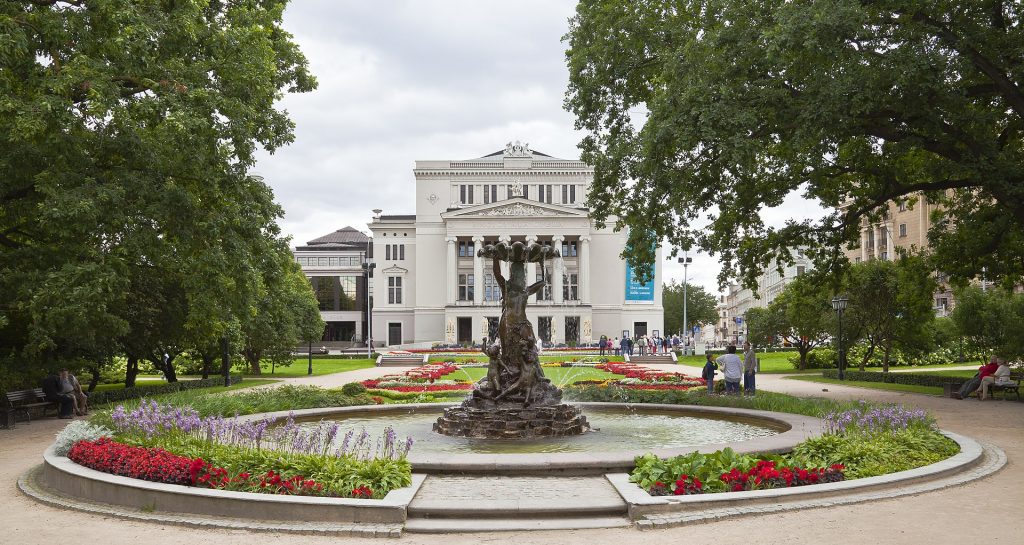
Around 9,000 Jews live in Riga. Riga is also home to the only Jewish hospital in the former Soviet Union. The Latvian Society for Jewish Culture is the principal organization of the Jewish community.
Today, the Latvian capital remains an important financial and cultural center. The Jewish presence in Riga dates back at least to the 13th century. Expelled in the 14th century, they resettled in 1561 when Poland took control of the territory. Previously obliged to bury their dead in Poland, Latvian Jews obtained permission to build a cemetery in 1725. Despite the improvement in their situation, by the mid-18th century there were only around two hundred Jews in Riga. Most were craftsmen, intellectuals, and doctors.
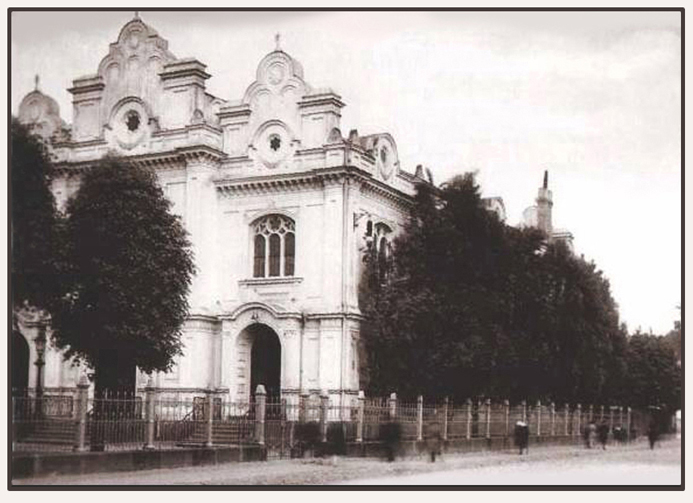
In the 19th century, the Jewish population grew from 513 in 1824 to over 20,000 in 1897. In 1935, the Jewish community reached its peak with 43,672 members, representing 11% of Riga’s population. The vast majority of those unable to flee the Nazi invasion were massacred during the Holocaust.
Following the German defeat, the community was reconstituted, notably with Jews from other parts of the Soviet Union. In 1989, before the fall of the Soviet empire and Latvia’s regained independence, there were 23,000 Jews. Many of them migrated to Israel, England and the USA.
Latvia’s independence led to a renewal of Jewish life, as illustrated by the opening of Jewish schools and yeshivoth in the early 1990s.
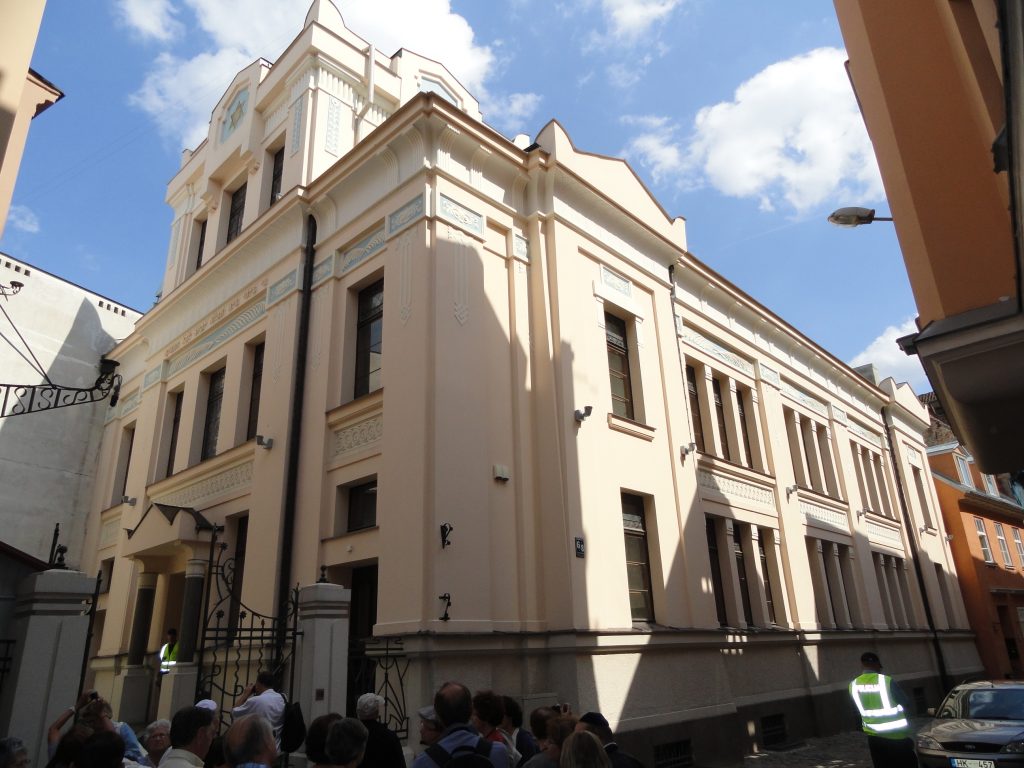
Few of Riga’s religious edifices remain. The Kar Schul Synagogue , which opened in 1871 and was located at 25 Gogol Street, burned down in 1941. Several hundred people trapped inside perished in the blaze. Some ruins of the synagogue can still be seen, as well as a gray stone monument engraved with a Star of David.
Constructed in 1905, the synagogue on Peitavas Street was able to be restored because it was used by the Nazis as a warehouse and so escaped destruction. It is currently used for worship.
The Jewish Museum is located in the historic building that once housed the Jewish theater. Today’s community center is also located here. The museum features exhibits devoted to the history of Latvian Jews and a video that retraces this history of the Shoah in Latvia. There is also an exhibit related to famous Jews of Riga.
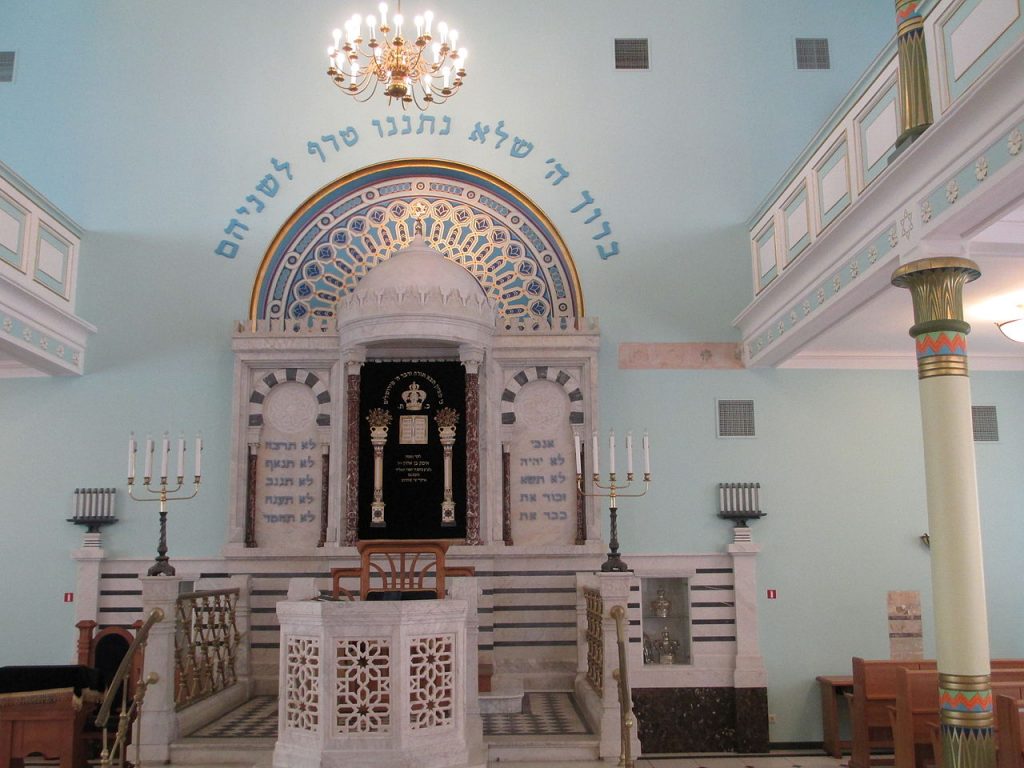
Among them are the Israeli philosopher Yeshayahu Leibowitz, an original and controversial thinker whose strict Jewish Orthodoxy nonetheless makes room for modernity and a left-leaning pacifism; the political philosopher Isaiah Berlin (1909-97), who became a British citizen and a professor at Oxford; and the great rabbi Avraham Kook (1865-1935), the mentor of the religious Zionist movement and the first Chief Rabbi of Palestine under the British mandate.
There is a plaque on the building where Isaiah Berlin lived on Alberta Street (it is located next to the only building on the street with a yellow facade). The former home of Isaiah Berlin, like all of those on the street, was designed by the famous Russian architect Eisenstein, father of the celebrated film director.
The former Jewish cemetery, with its thousands of gravestones, was transformed into a park. The new Jewish cemetery was created in 1920. Registers of the deceased dating from 1951 to the present are available for examination.
The Center for Judaic Studies at the University of Latvia was set up in 1998 and is directed by Professor Ruvin Ferber. It includes a library.
Visitors doing genealogical research can go to the State Historic Archives , which possesses documents regarding most of the cities and villages with a Jewish presence before the Shoah.
One should also note that the Shefayim Kibutz in Israel is the site of the Association of Jews of Estonian and Latvian Origins, which has a library and important archives relating to life in shtetlach before the Shoah.
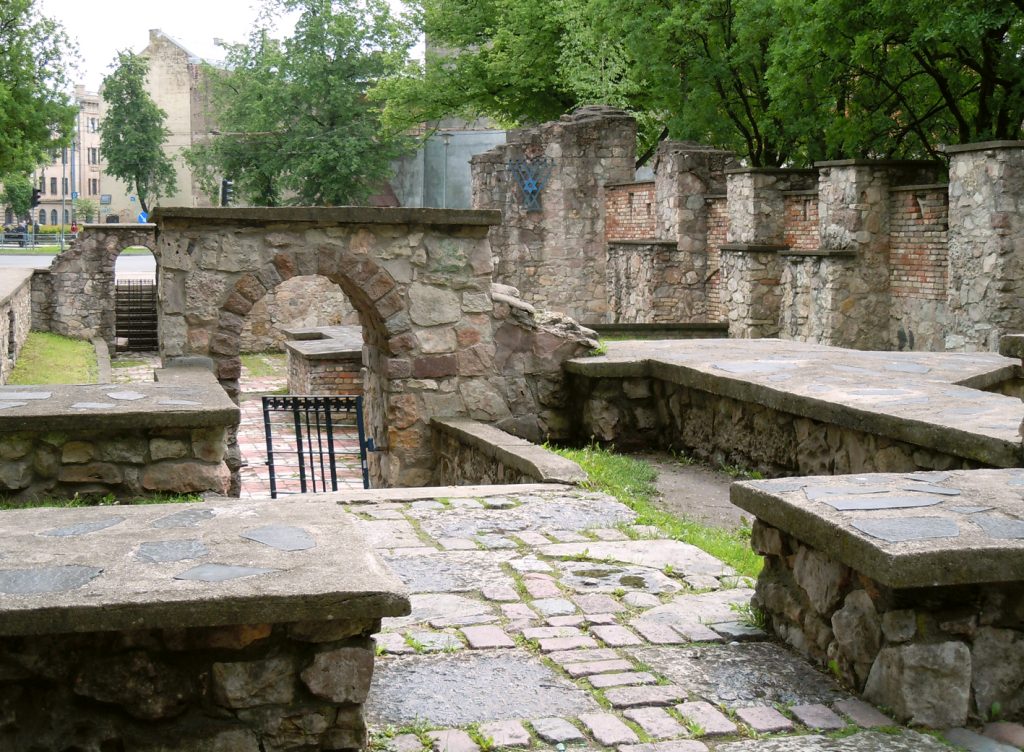
Monuments to the Riga Jews massacred during the Holocaust have been erected in the Rumbala and Bikernieki forests. Between November 30 and December 8, 1941, 25,000 Jews were murdered by the Nazis in the Rumbala forest. After a long struggle with the Soviet authorities after the war, the local Jewish community was granted the right to install a memorial stone there in 1964. The current memorial, with a menorah at its center, was built in 2002.
Between 1941 and 1944, 35,000 people were murdered in the Bikernieki Forest, mainly Jews and political opponents of the Nazi regime. Some 20,000 Jews are buried there. A metal structure symbolizing the horrors of the Holocaust was erected in 2001, with thousands of granite stones surrounding a black cube.